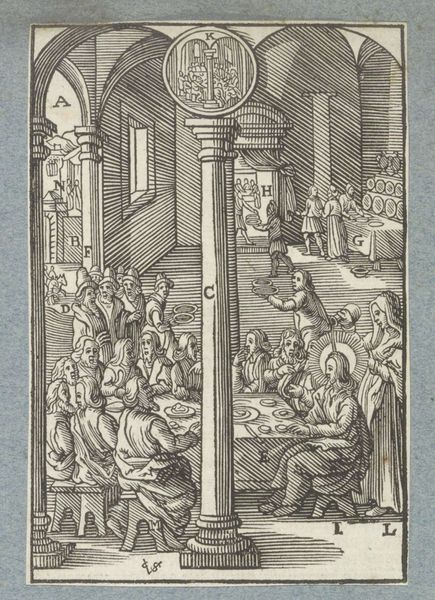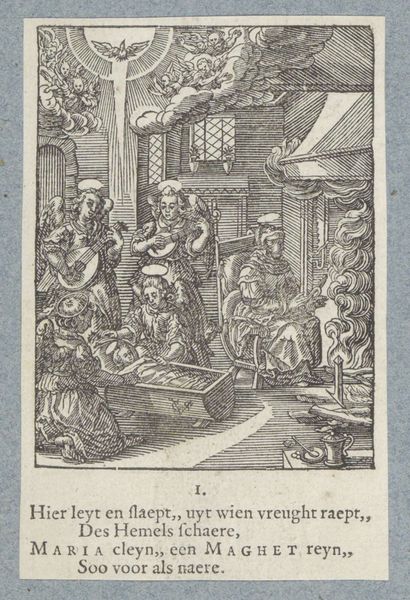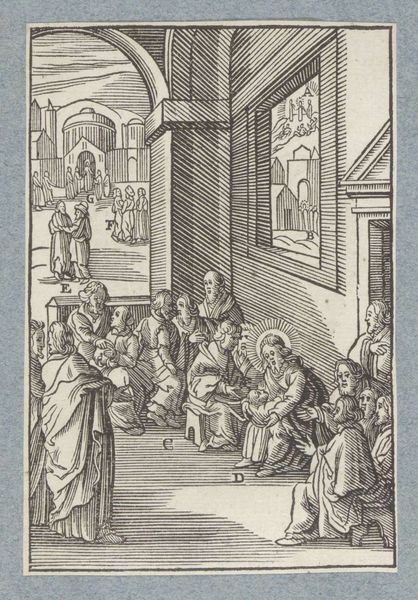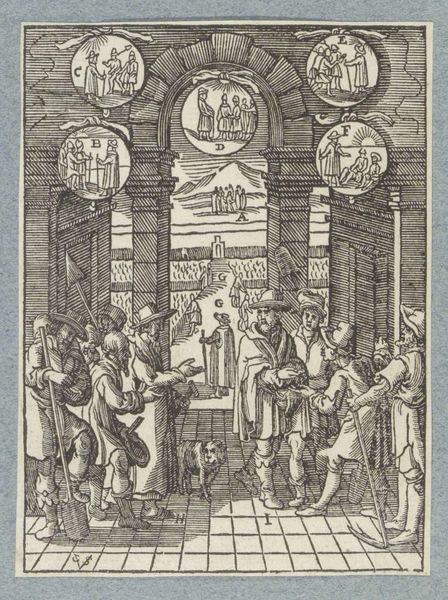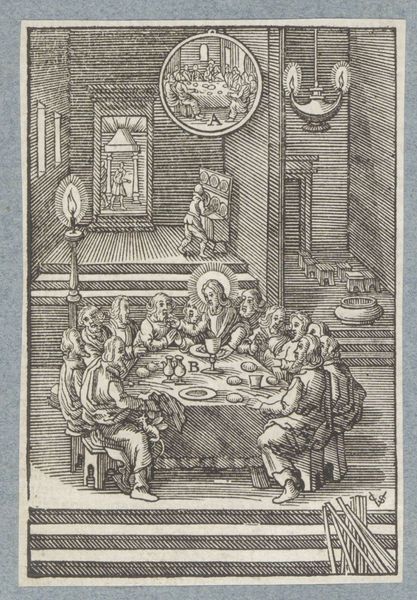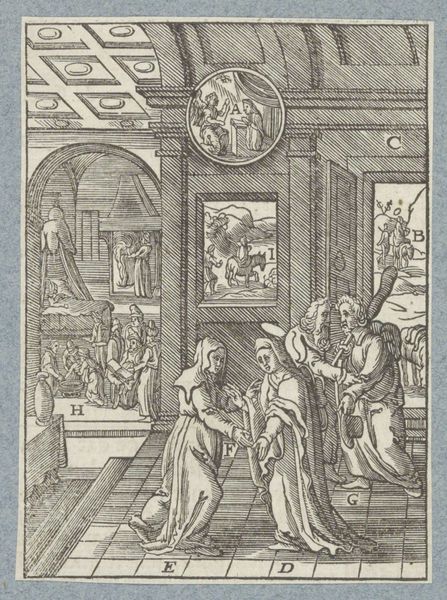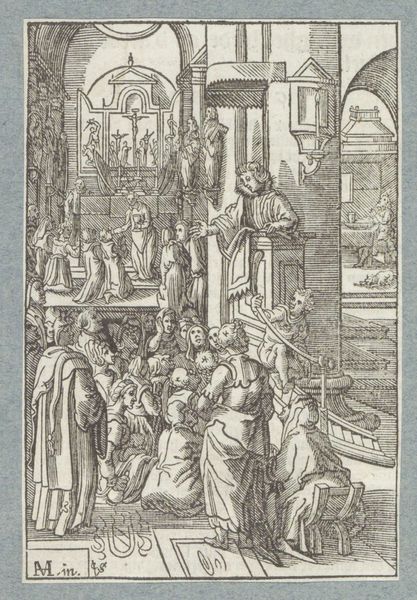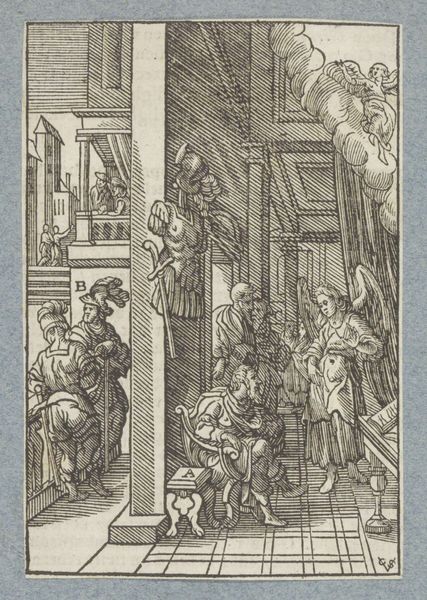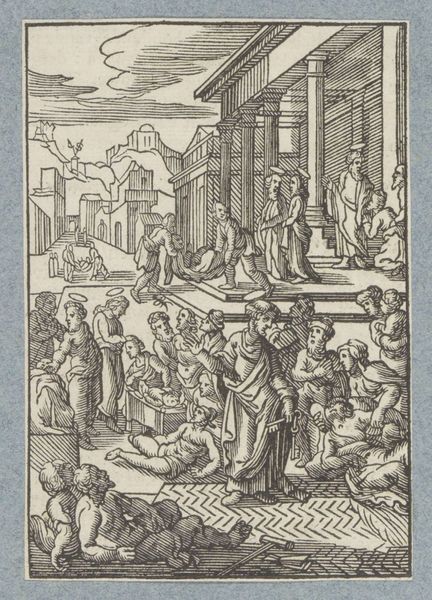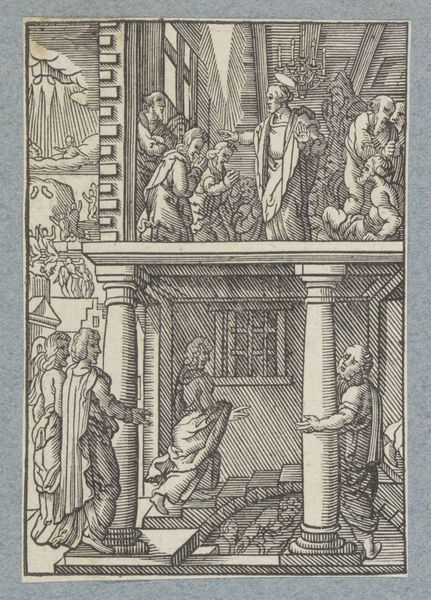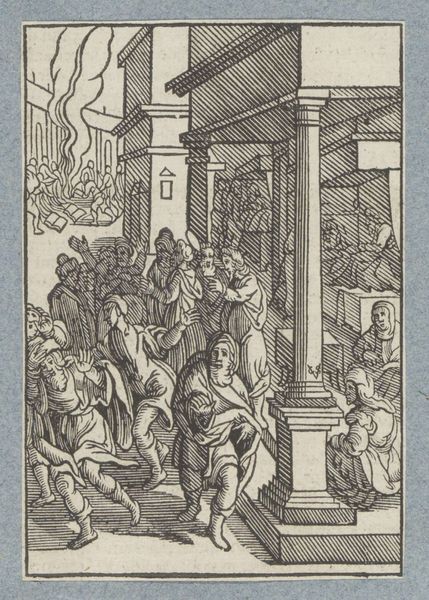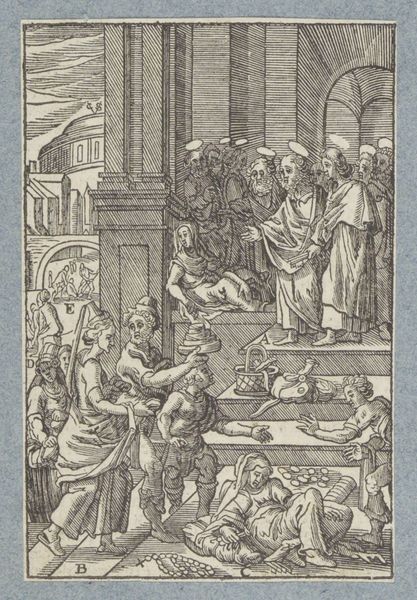
print, engraving
#
baroque
# print
#
figuration
#
line
#
history-painting
#
engraving
Dimensions: height 113 mm, width 76 mm
Copyright: Rijks Museum: Open Domain
Curator: Here at the Rijksmuseum, we have before us a striking print from 1629: "Maria Magdalena zalft de voeten van Christus," or "Mary Magdalene Anointing the Feet of Christ," created by Christoffel van Sichem II. Editor: It has such an intensity. The stark contrast between the lines creates a very dramatic feel, especially within such a tightly packed composition. It’s quite powerful, given the small scale. Curator: Absolutely. This engraving showcases a well-known biblical scene, made accessible to a broader audience through the printmaking process. Van Sichem's choice of the subject—Mary Magdalene washing Jesus's feet—places it within the context of religious teachings and moral lessons disseminated at the time. The Baroque aesthetic certainly lends to that drama you mentioned, through theatrical elements. Editor: Considering its materiality—engraving on, presumably, paper—I find myself pondering the labor involved in such intricate detail. All those fine lines carefully etched… and then the question of its reproduction and circulation. Did the accessibility impact interpretations? Curator: Certainly. Prints like this were important tools during the Counter-Reformation. The readily available imagery supported the Church's messaging and bolstered faith during a tumultuous era. The visual language employed helped shape the popular understanding and the emotional response to the biblical narrative. Editor: And speaking of messaging, it's impossible to ignore how the material form influences it. Each print, pulled from the engraved block, brings its slightly different impression, marking each with the imprint of the artisan’s labor and the capabilities—or limitations—of the material itself. It moves away from unique aura, but introduces a type of authenticity too. Curator: Very insightful. This piece, made with skill, clearly was a significant image for those who saw and kept it—likely a representation of devotion made accessible to the people. It demonstrates the dynamic role art has played in shaping our social fabric, echoing within society's structures through popular religious practice and discourse. Editor: Precisely. From a material perspective, the art object's social function intertwines with every stage of its production and dissemination. An art's economic structure thus plays a role in forming perceptions. Curator: Indeed, a piece to contemplate regarding art’s function! Editor: A worthwhile object lesson.
Comments
No comments
Be the first to comment and join the conversation on the ultimate creative platform.
